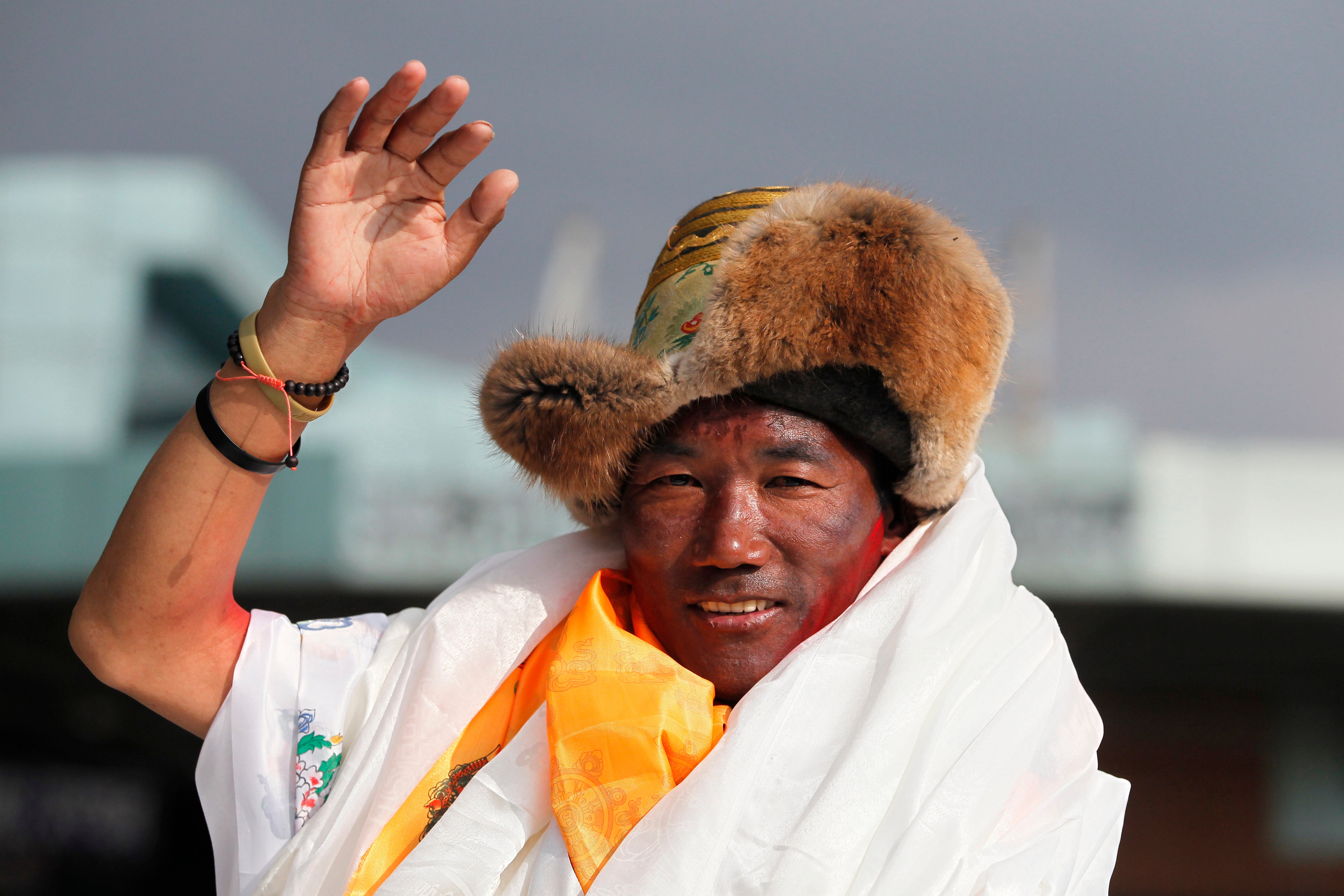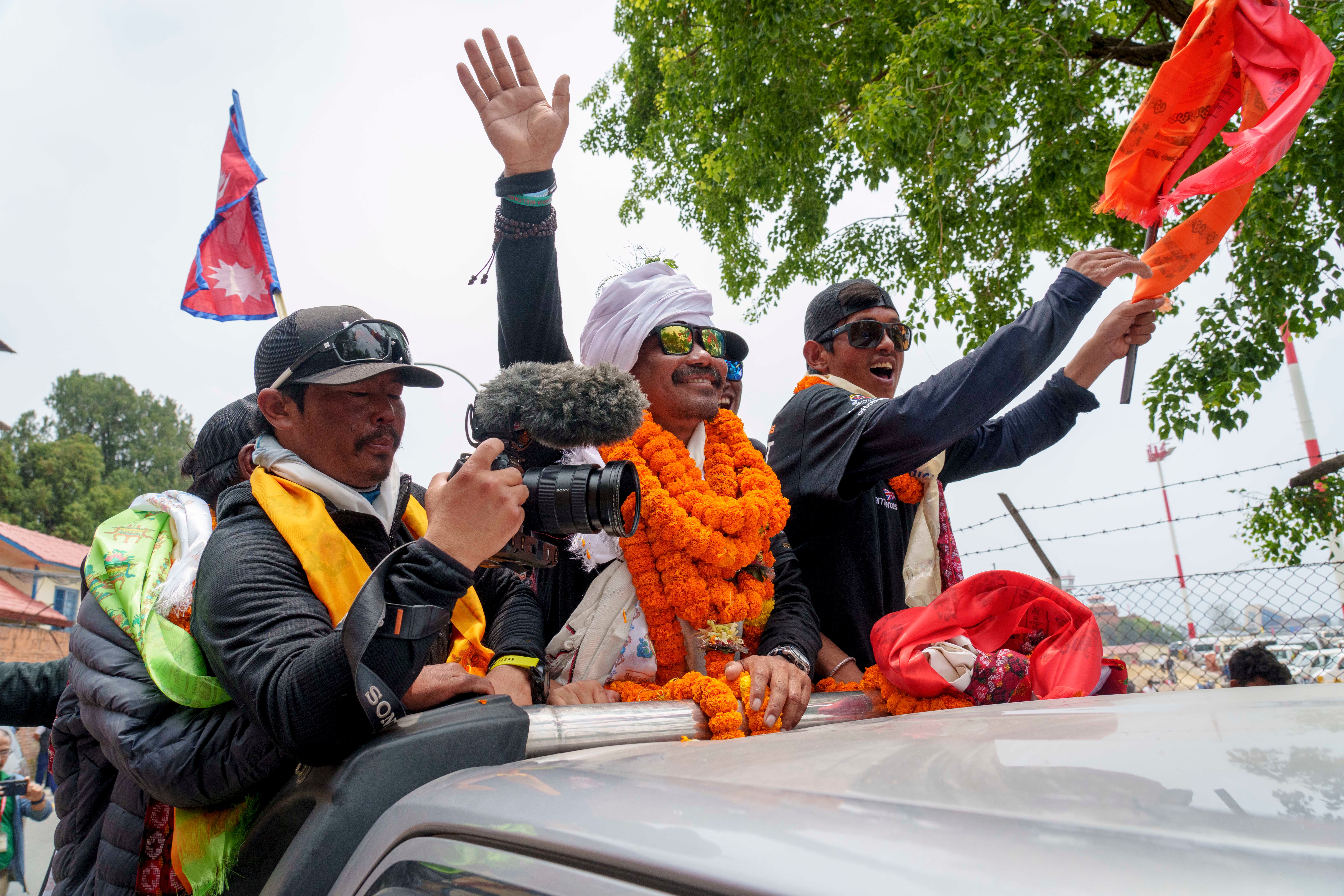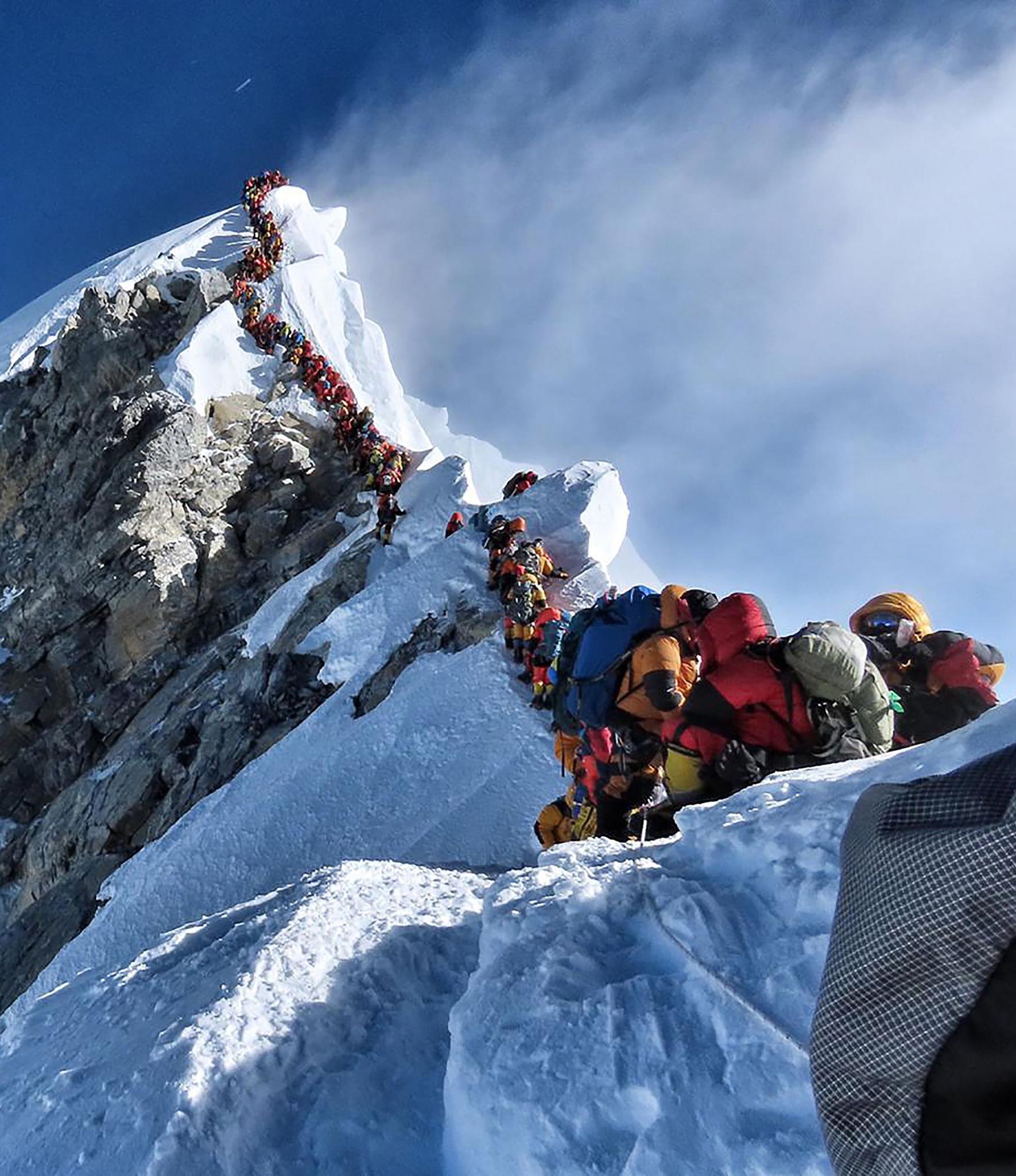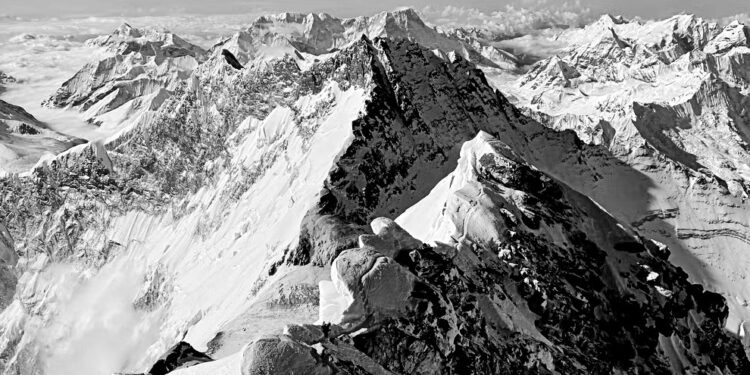Jason Bernard Kennison was told he would never walk again after a horrific accident in 2006, yet this month the Australian defied all his doctors’ expectations by climbing to the summit of Mount Everest.
He did not make it back down the mountain, having fallen ill on the descent.
“He stood on top of this world but sadly didn’t come home,” his grieving family in Perth said.
Kennison spent 17 years learning to walk again following the accident that left him with spinal injuries. His climb was to raise money for the charity Spinal Cord Injuries Australia – instead, he became one of a growing number of mountaineers losing their lives climbing Everest.
The world’s tallest mountain has already claimed 11 lives since April, when the climbing season began. Though no one agency collates statistics on Everest casualties, on average it is believed that between three and five climbers perish each season.
This year, the Nepal government issued 478 permits to climb Mount Everest, local media reported. The previous record was 409 for 2021.
Nepal has eight of the world’s 14 highest peaks. According to Nepal’s Ministry of Tourism, until 14 May, the government generated a revenue of $5.8m from mountain tourism, $5m from Everest alone.
Mountaineering experts criticised the move to increase the number of permits.
“The challenges with more climbers on the mountain will be potential traffic jams on the climbing route, especially if the weather windows are few and far between. This can lead to climbers running out of oxygen and facing exhaustion/exposure,” says Garrett Madison, president of US-based Madison Mountaineering.
The “death zone” is a name given to the highest part of Everest, or everything above 26,247ft (8,000m). The atmospheric oxygen there is so low that the cells in the human body die in the absence of any supplementary oxygen. Studies show that judgement of climbers becomes impaired and they can experience stroke, heart attacks, and severe altitude sickness.
Dr Jeremy Windsor was one of the 10 doctors who climbed Everest in 2007 as part of the Caudwell Xtreme Everest Expedition. A survey found that in the death zone, “mountaineers were surviving on just one-quarter of the oxygen they needed at sea level. These were comparable to figures found in patients on the verge of death”, he told mountaineering blogger Mark Horrell.
But the death zone hasn’t stopped mountaineers from making the dangerous trek.
‘The mountains left him awestruck’
Doctor and expert mountaineer Jonathan Sugarman, 69, from North America always felt at home in the mountains. The Seattle climber died earlier this month at Camp 2 on Everest, which sits at roughly 21,000ft. Pasang Sherpa, an expedition organiser, told CNN that Sugarman died “after he began to feel unwell”.
“I think the mountains just kind of left him awestruck,” his daughter Maya Sugarman told the Seattle Times. “He felt the beauty and power in those mountains. His loss left a massive impact. He was really like a mensch,” she says.
On 18 May, 52-year-old Chinese climber Xuebin Chen lost his life while on his way to the summit. The expedition agency told local media that Chen fell unconscious during oxygen replacement at the dizzying height of 8,000m.
Another casualty this year was climber Ag Askandar Bin Ampuan Yaacub. Ampuan Yaacub, who worked with the Malaysian Police, reached the south summit, where he fell ill and couldn’t go up, Nivesh Karki, director at Pioneer Adventure, told the Himalayan Times.
He died on the way down to Camp 4 on 20 May. His heartbroken wife said: “Although you were busy with work, there has never been a single day that you ignored us. You are indeed a father who really loves all his children, always advising them to ‘help mama, listen to mama’.”
Suzanne Leopoldina Jesus, 59, wanted to set a new record for being Asia’s first woman on a pacemaker to climb Everest. However, she was advised to abandon her attempt to scale Everest as she was not able to maintain a normal speed during acclimatisation exercises on base camp, said Yuvaraj Khatiwada, director at the Tourism Department of Nepal.
Inspiration to climb
The climbers who make it to the top and set records of all sorts add to the Everest dream.

Kami Rita Sherpa, 53, successfully made the climb for the record 28th time this month. Sherpa first summited Everest in 1994 and has been making the trip nearly every year since. His father was among India’s first sherpa guides.
A former Gurkha soldier who lost both his legs in Afghanistan also became the first double above-the-knee amputee to reach the top of Mount Everest. Hari Budha Magar arrived at the world’s tallest mountain on 17 April, exactly 13 years after his legs were destroyed by an improvised explosive device.
Budha Magar completed the challenge with specially designed prosthetic legs that could cope with the ice and snow.

But for some like Tenjing Sherpa, Lakpa Sherpa, and Badure Sherpa, the trek proved deadly. They all died at the Khumbu Icefall, a constantly shifting glacier with deep crevasses and huge overhanging ice “that can be as big as 10-storey buildings”. They are believed to have fallen into a deep crevasse after their position was hit by an avalanche.
Phurba Sherpa, a part of the Nepal Army Mountain Clean-up Campaign, died too. At the South Col – a sharp-edged pass between Everest and Lhotse – Moldovan climber Victor Brinza fell ill and died on 17 May.
‘People who aren’t supposed to be on the mountain are’
This year marks the 70th anniversary of Tenzing Norgay Sherpa and Edmund Hillary’s ascent of Everest for the first time, which may have contributed to the number of requests to climb. Several expedition companies published ads for anniversary treks to the Base Camp.

Because of the traffic jams, climbers have a higher chance of contracting mountain sickness.
Dr Kumaran Rasappan, an orthopaedic surgeon at the National University Hospital who climbed Everest in 2012, suggests the permit system isn’t working as it should.
In 2019 that the local government issued an order saying that permits to climb Everest would be granted only to those who have previously scaled a Nepalese mountain of 6,500m or higher. “I think a lot of people who aren’t supposed to be on the mountain are there … because of a multitude of faults,” Rasappan says.
Some have suggested that climbers may not have the required experience. “Many of the companies now guiding on the south side of Everest are taking climbers who have not yet developed the experience necessary to safely navigate the difficulties,” Adrian Ballinger of US-based Alpenglow Expeditions told Reuters.
The single deadliest day, when 19 people lost their lives on Everest, was on 25 April 2015. A 7.8-magnitude earthquake killed 19 people at the base camp. A year before that on 14 April, an avalanche killed 16 Nepali climbing guides. The death rate from climbing Everest in the last year 30 years is about 1 per cent.
Source: Independent



Recent Comments